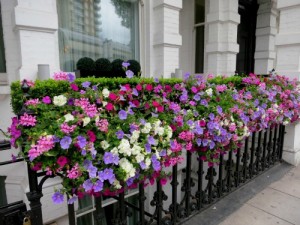Posts Tagged ‘boat train’
Stereotypes and misconceptions
When I lived in England in the 1960s it bugged me that, when they learned where I was from, people would typically have one of three responses:
1) They had no idea where New Zealand was.
2) They thought it was part of Australia.
3) They knew of it as that pastoral paradise they’d dreamed of emigrating to when they were younger.
Reading my old notes about coming to England in 1962, I realize that I too had huge misconceptions about what my new home would be like. Here is the account of our arrival:
First view of England – not counting faint views through the foggy channel – picturesque houses of Isle of Wight – only we thought it was Southampton and decided England must be charmingly antique and folksy, with church spires peeping through the trees and glowing green fields running down to the sea. but we were a little perturbed that we couldn’t get our geography right. Fascinated by the light – very soft, still a little hazy after the rain and fog of the day before, but with the sun coming through in pale golden streaks.
Our ship anchored off the Isle of Wight and passengers were sent ashore by tender. We managed to miss the boat train by being held up at Customs – a fuss over a lens Tony had bought in New York. But were well looked after by the railway porters, who rushed to get us into a taxi to catch the same train at the central station. On the way, the taxi-driver casually pointed out the old Roman wall of the town. As we gazed in amazement at something 2000 years old, and taken for granted, we began to realize the sense of history about the place, which confirmed even more the feeling of newness about New Zealand. My notes continue:
As the train pulled out of the centre of Southampton we discovered the slums. Obviously not the worst of the slums, but up till then we haven’t really believed that they existed, although we could mention them matter-of-factly. England from New Zealand looked a golden land, a land of opportunities, a land that housed the rich heritage of the old world. It definitely did not mean rows and rows of dreary brick buildings exactly alike, and behind them rows and rows of exactly similar yards, with blackened paling fences and rubbish tins. But occasionally we recognised the cry of a human spirit – from among the debris would rise a patch of golden daffodils dancing in the pale sun, cultivated by loving hands. And for a time we passed through farmland, with pussy-willow growing fat by the railway track, and small boys ambling cheerfully by hedges. Even one or two thatched cottages and barns, and we felt with a sentimental rush that we really were in England. But as we neared London the houses grew thicker and more dreary, their bricks blackened with smoke and soot, their monotony more grey. But even here people were making the best of their situation with window boxes full of bright flowers.
As well as misconceptions, I had opinions. I was amused to find in my notes that, with no knowledge of English social attitudes and no background whatsoever in urban planning, I laid out an argument about high density housing:
I have not yet resolved the problem of what is the best form of high density housing for such a city. Most people are housed in these old row houses, a monotonous block, but at least with some little bit of ground, however filthy and untidy, that they can call their own. The other alternative seems to be tall apartment blocks in their own parks. The disadvantage of these seems to be that the people shifted into them lose their sense of community – they no longer feel that their home is their castle, for they share it and its services with dozens of other families. I would feel the lack of a bit of ground of my own to cultivate, or just sit in. A semi-public park is all very well, but it gives no opportunity for creative contact with the earth. I have seen a few modern blocks of row houses, some of which are quite pleasant, but others will obviously become the future counterparts of the present monstrosities – pleasing to look at now because they are new, but once the newness has worn off little of artistic value will remain. Others, particularly a small block seen near Primrose Hill, had a cheerful friendly atmosphere that appeared more durable.
Ah, the certitude of youth.

